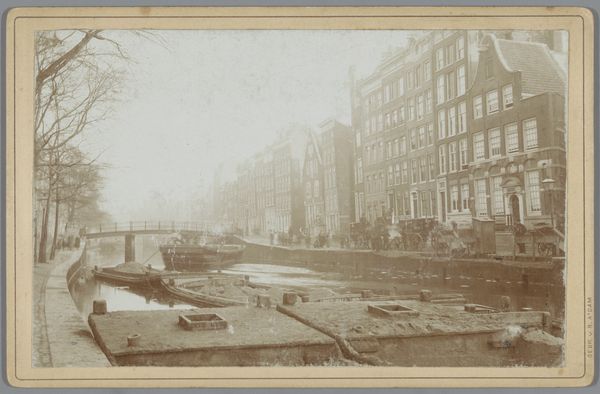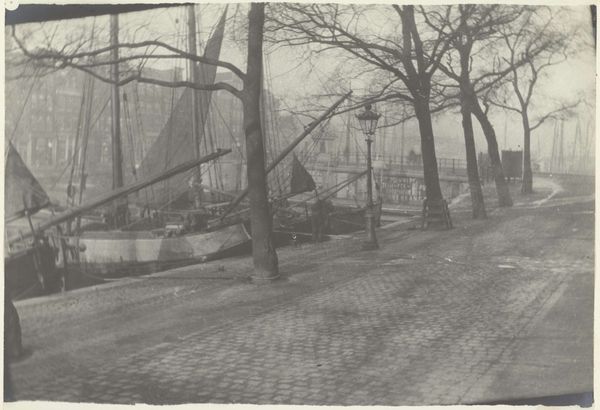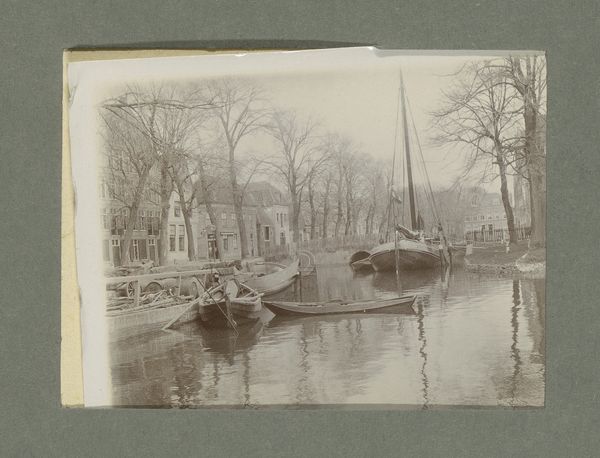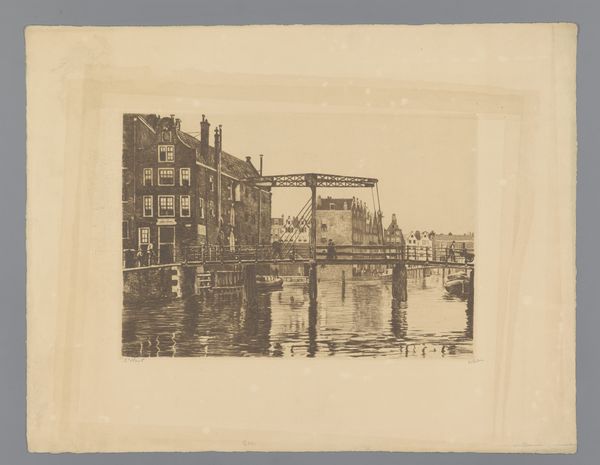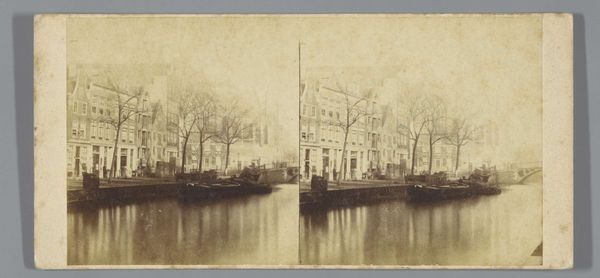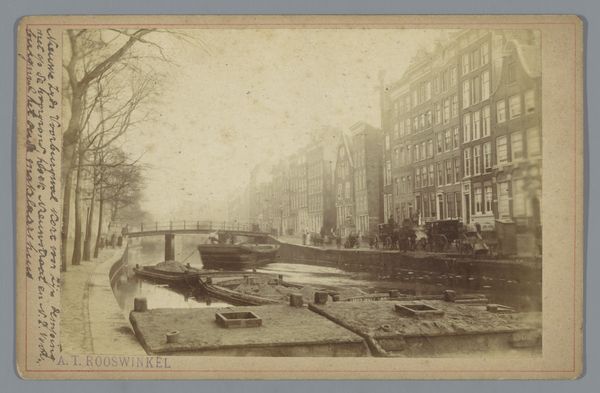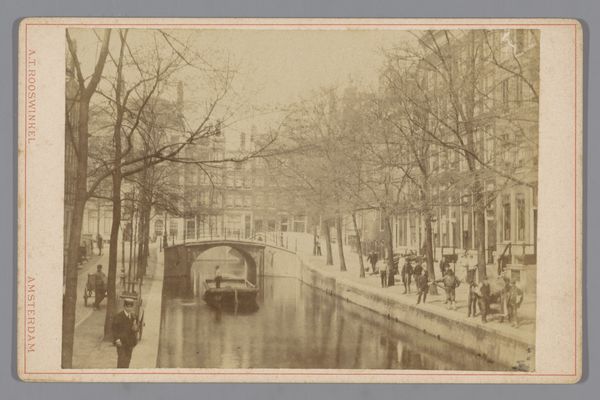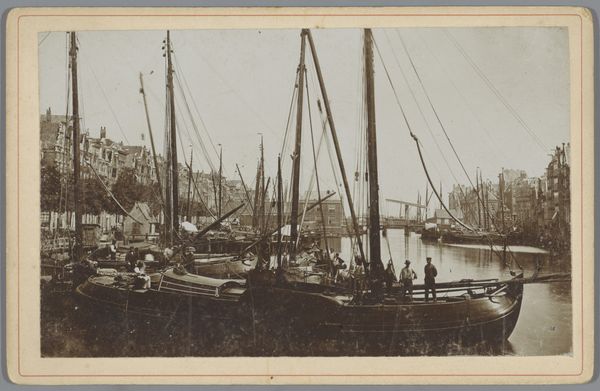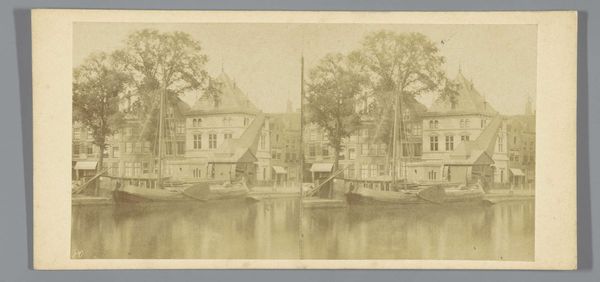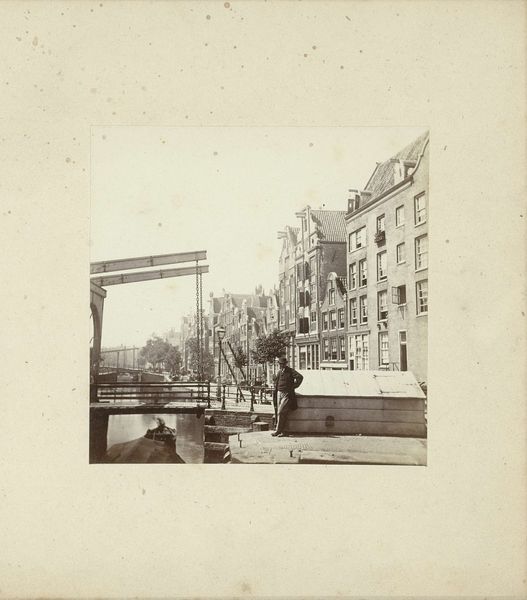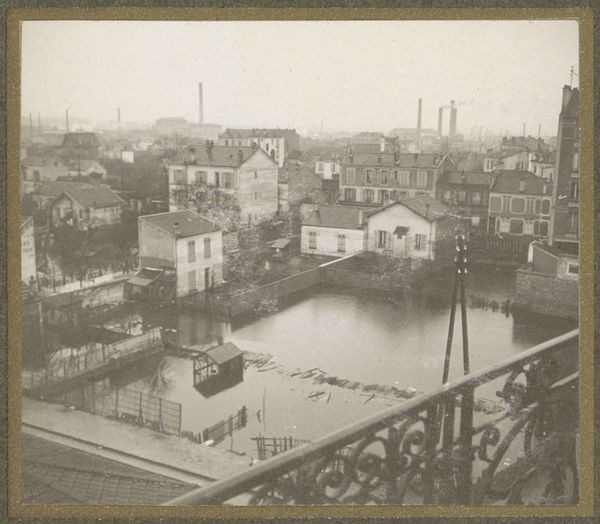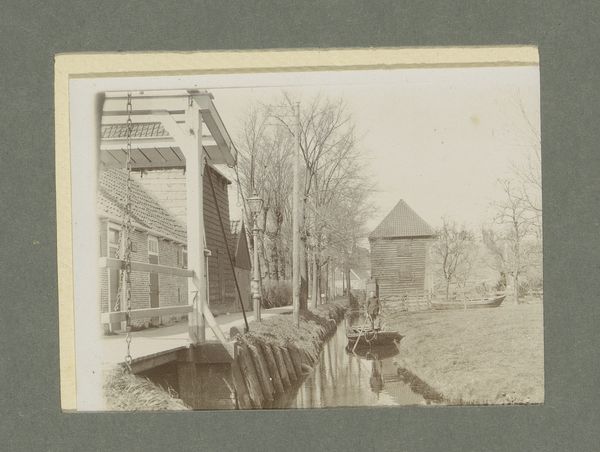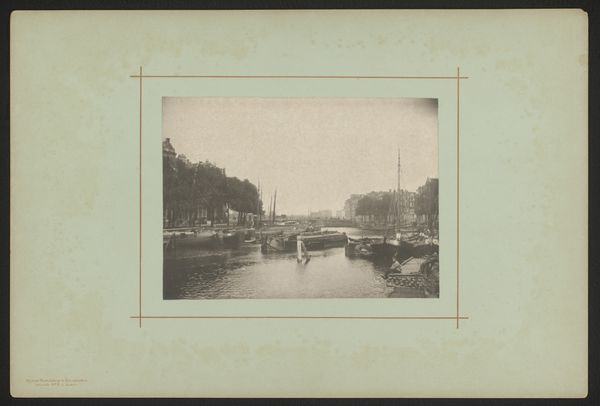
Fotoreproductie van het schilderij Winter in Amsterdam van G.H. Breitner 1901 - 1930
0:00
0:00
Dimensions: height 104 mm, width 187 mm
Copyright: Rijks Museum: Open Domain
Curator: Here we have a photographic reproduction of "Winter in Amsterdam" by G.H. Breitner, likely made sometime between 1901 and 1930. It resides here at the Rijksmuseum. Editor: A monochrome city study—gloomy but compelling! The low vantage point really emphasizes the urban infrastructure. Curator: Indeed, and this image of winter carries a certain weight of Dutch identity. Consider the legacy of landscape painting here—frozen canals, skeletal trees… elements loaded with historical memory. Editor: Right. Notice how Breitner organizes depth through contrasting textures and tones? The heavy boats dominate the foreground and how buildings progressively fade into the muted background. Curator: These cityscapes often represent not only the physical city, but the economic life that pulses through it. The boats for trade, construction of buildings—they are silent witnesses to a developing metropolis. The frozen canal alludes to a world of hardship, of the daily grind against the odds. Editor: Yet even in this seemingly stark environment, I sense the early experimentation with light and atmosphere of Impressionism. Look closely how the city scene resolves in the reflected glare on the canal’s icy surface, despite its photographic origins. Curator: I would argue this image functions almost like a secular icon. Winter, an allegory in Dutch cultural psyche. We often consider these quiet city views to carry social messages regarding how citizens should conduct themselves within city constraints and how the urban structure dominates and dwarves their existences. Editor: And Breitner, through formal composition and arrangement, turns that very real lived environment into a moving—if muted—study of light and form. Curator: The artist seems to subtly remind us that winter yields to spring, and societal struggles always point to resolutions; the image implies resilience of community through natural challenges. Editor: I will not fail to acknowledge that visual ingenuity and composition do not merely portray a city but offer insight into what this particular artist thinks a city really is, its essence beyond the practical. Curator: Well said! A reminder to observe cities with deeper perspectives. Editor: Indeed. A brief window onto how form illuminates historical feeling.
Comments
No comments
Be the first to comment and join the conversation on the ultimate creative platform.
